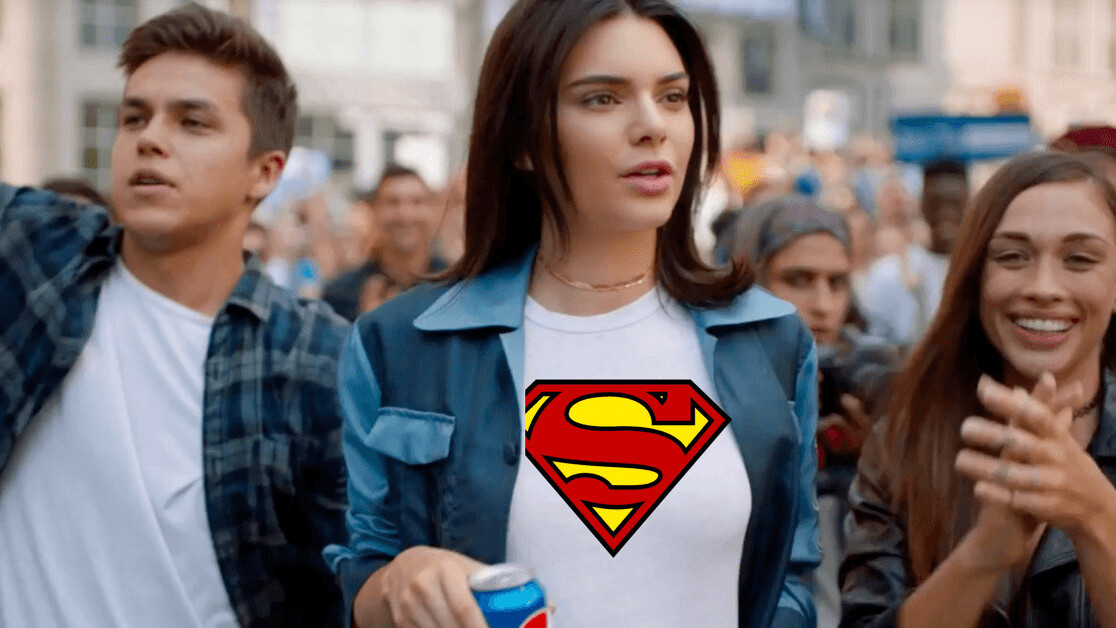
You have a story. It may be intentional and carefully-crafted. Or, it may be construed from the interactions and bread crumbs you leave. Just because you aren’t actively telling your story doesn’t mean you don’t have one. If you’re in the world, the world has a story about you.
2017 was a momentous year. From political upheavals and protesting to shifting social landscapes, the year saw many historically defining moments. More and more companies took the mic to take a stand (and get their brand in front of an ideal audience). Some of these campaigns were successful, others were suicidal.
The ideas below will take a look at how you can best (and most effectively) show up in the world; how you can approach the telling of your own brand’s story. But first, let’s start with two starkly contrasting anecdotes.
How to get it wrong
Let’s look at two very loud campaigns that captured an amazing amount of attention. First, there’s (gulp) Pepsi.
Obviously, their ad featuring Kendall Jenner was far from a success. Describing it as a travesty might not even delve into the depths of how poorly it was received. Besides choosing a topic that they simply should have left the hell alone for marketing purposes, what did they do wrong? It’s simple — they made themselves the hero of the story.
The audience hated this commercial for inserting themselves into a culturally sacred space, and for doing so in just the way we would traditionally expect a big corporate brand to do. From Wired’s perspective: “Pepsi’s Kendall Jenner Ad Was So Awful It Did the Impossible: It United the Internet.” It’s tone-deafness, it’s utterly unaware marketing faux pas, actually made people in our country unite and agree about something.
Pepsi Exec: We need to boost sales. What are the youth into these days?
intern: protesting
Exec: good. we endorse it. but make it subtle pic.twitter.com/uiwxJWuVV2
— Discount Chris Pratt (@thelollcano) April 5, 2017
A different approach
Whether planned or accidental in the wake of Pepsi’s mic drop, Heineken debuted their own socially-conscious and politically-charged approach with this ad spot.
Essentially, Heineken brings groups of two people — with opposing views on issues that can be divisive and messy — into a confined space. These people work together to achieve a common goal and develop a rapport without really knowing anything about each other. When their collaborative mission is complete, they are shown videos of the other professing their raw, uncut beliefs and biases.
As their prejudices are exposed to each other, they’re given a simple choice: walk away from the person that they just created some sort of bond with, or sit down, enjoy a beer, and talk some stuff out.
So, Heineken set out with the same intention as Pepsi, to show their product as something that could break down barriers, to unify in a polarized atmosphere. The major difference — and really the only one that truly matters from a marketing perspective — is that Heineken hit their mark, connected with their audience, and created a message of inclusivity. So, why did it work better?
Heineken didn’t ultimately make themselves the hero of the story. They made people — indeed, the commonality of humanness even in those of us who disagree — the hero of their story. And because the views of the people that they used were so divergent, but treated with respect, they cast a wide net and let everyone feel heard.
They basically said: “Sit down, have a beer, and connect with your fellow humans. Expand your world and see where it goes.” They didn’t try to say that Heineken could solve the world’s problems. They said that humans could work together to solve problems. Why not have a beer, sit down and start? Most of the audience didn’t have a problem with said beer being a Heineken.
The reasons behind failure and triumph
Heineken offered the audience more, something more to buy into and believe in. They not only captured eyes and ears, they created pause, connection, reflection. And yes, they produced beautiful, high-quality creative on a budget that can support bold brand moves.
The impact you can create doesn’t need a big media buy, but if it follows these truths, your marketing has the potential to not just resonate but abide in the hearts of your audience, the true hero of the story.
1. Know thy audience — understand their truths
Use your market research but ask questions beneath your statistics. Big data is a gift of the 21st century and targeting technologies have massively honed our ability to reach who we’re after. The abundance of available information on your audience is massive — if you can afford it. But, you can’t stop there. Dig beneath the data to uncover the human stories, foundational values, and underpinning worldviews of those you hope to engage.
How do you get there? The adage that it’s better to listen before speaking holds especially true for any brand or campaign looking to capture someone’s attention and action. Listen to your audience before you speak to them. What are they saying and to whom? What is their story of their world?
Listen to understand. Listen to develop an intuitive intelligence, like the kind you have for your circle of friends. You know what matters in their worlds, you understand their challenges and care about their triumphs, because you share values — common ground for relating and supporting.
Customers are more informed than at any point in the history of marketing to them. They know what you’re up to. And they want to believe in a moral marketplace, where they choose brands based on how those brands align with their own sense of morality.
Our core values are intimately tied to our identities and not only do we tend to gravitate toward what resonates, we also defend the things we hold dear. When a brand speaks to our core beliefs, we hear it more, we see it more, and most importantly, it lodges in a place that relates to our core sense of self and truth.
2. Be real (and distinctive) in what you’re communicating
Thanks to traditional advertising, we can now smell a sales message from a mile away. And we have precisely zero time for it. Snake oil had its day. That day is gone.
Competitor comparisons, phrases that include “we’re the best, most all-natural, highest quality, cheapest, blah blah blah” are all value propositions of yesterday’s marketing era. The cheapest, fastest game as a business model is a race to the bottom, so don’t get trapped messaging your product (value) in those terms. Superlatives and hyperbole reek of the clickbait that promises only to rob you of your precious time and attention.
Instead, think about communicating value in terms of what you’re offering the actual individual that you’re trying to reach. Think about the human beings who will really truly benefit from what you have to offer. Be real, be aspirational — and above all — be honest about what you’re selling and to whom.
Ask yourself how you’re offering a return on their attention. How are you making their lives better? You can still be “all natural” and “world class” but you need a moral to the story, something for people to believe in and buy into that aligns with their core truths and communities.
3. You’re not the hero of the story
I remember waking up as a little girl and telling my mom about my dreams over breakfast before school — wild tales of adventure, conquest, harrowing escapes, and rescues. She once pointed out that the only common thread was that I was always the hero. It was true. And why not? They were my dreams, happening in my own subconsciously fabricated world.
But the everyday world of culture and commerce is a real stage with real actors that have the potential to make or break your dream/company/project. Make them the hero of the story, no matter how tempting it is to be the star of your own show.
Look at the pronouns you’re using. Is it “us, our, we” or is “you, them, they”? For example, I recently bought a lottery ticket, entertaining without believing the idea of actually winning such a bloated jackpot. The corner store advertising of this particular lotto boasted a message. Something like, “We’ve donated $64 Million to charities and public education.” That’s great. And it’s the end of the story.
Simply changing the message to “You’ve donated $64 million this year. Thanks for playing” makes me, the lottery player, the consumer, the hero of the story. Now, even if I lose, which I know I will, I still feel good about my dollar spent. I lost and I can still feel good. The message tells me what we can do together — an invite into something more than just a snowball’s chance in hell. My transaction is a nobler cause and I favorably remember the company for being a platform of good.
That’s a minor example, magnified to illuminate that even the simplest piece of communication can have subtle, invaluable impact as the result of how you tell your story.
4. Speak the truth and deliver on it
Listen to understand so you can connect authentically and honestly to a place where you gain not only an audience but advocates — because you resonate where it matters. If you can’t connect to the core values of your audience, you’re looking in the wrong place.
Authenticity, at its core, means that you’re not simply putting out a marketing message to connect with a potential audience. It means that you actually care about the same issues that are facing your audience. It means that you’ve listened to what they have to say, digested it, and understand it on a deeper level. In other words, it’s real, not a gimmick.
A shortcut? No — A formula for success? Absolutely
Connecting is hard. If it were easy, every company could do it without assistance. It requires reflection, knowledge, humility, and honesty. But, by boiling it down—by reducing it to its strongest, most potent form like a chef would with a demi-glace—we would find this.
- Listen to your audience to understand who you’re engaging and what they believe in
- Speak to their core values and truths
- Communicate your message honestly and effectively
- Make them the hero of the story
If you can do the above effectively, you can win at the long game. You build a connection and loyalty. Your story will emerge, distinct from the competition. You’ll invite them to participate in a more meaningful way — to engage in a relationship built on reciprocity and respect. And when you reach your audience this way, you invite them to engage in a deeper, more meaningful way, which will in turn activate them to advocate for your mission.
Get the TNW newsletter
Get the most important tech news in your inbox each week.




